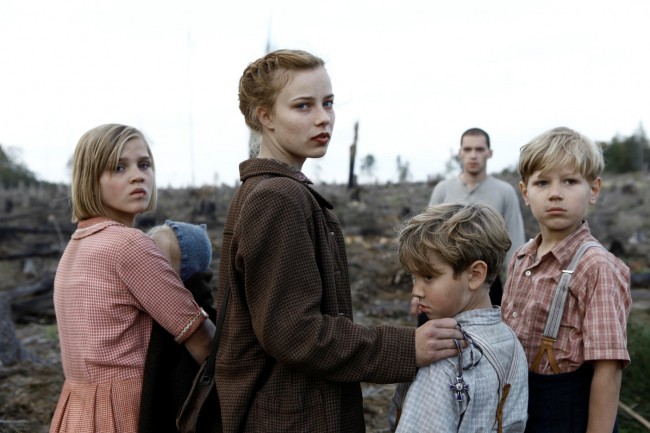Lore
Lore of War

Review written by Robert D. Patrick
Starring: Saskia Rosendahl, Kai Malina
WWII has been a sandbox for filmmakers to tell their stories in since the last shell of the war pockmarked the earth in the forties. In Lore, like many, many other films of the genre, the second world war, and its aftermath, is seen through the eyes of children. Some great films – Ivan’s Childhood, Closely Watched Trains and Empire of the Sun, to name a few – are all about the naivete of childhood being stamped out by whistling bombs and zinging bullets. Recently, lesser films, such as The Boy with the Striped Pajamas and Winter in Wartime, have dealt with the trepidatious subject matter of adolescents and war. With Lore, Australian auteur Cate Shoreland, having had released the sepia toned Somersault eight years earlier, drags the directorial chair out to tackle the tumultuous, egg shell sensibilities of children wading through the fallout of a jagged WWII Germany on the precipice of destruction, circa 1945.
Shoreland’s muted narrative, about a young girl, dealing with the barbed lies of her Nazi parents, reveals the seismic confusion within the cancerous roots of young children being raised in Hitler’s Germany. After Lore’s (Saskia Rosendahl) parents are escorted away because of their actions, the young German girl, and her siblings, must zigzag through a kaleidoscopic marsh of lies, xenophobia, and a withering country that is on the heels of its demise due to its narcissistic, erroneous ways. Lore’s siblings, straw-haired children with rubble on their eyelashes and dirt on their palms, crawl through a familiar – and yet foreign – Germany in search of refuge. Along the way, the troupe of kids encounter atrocities and social inequities that render their frail, evolving sense of self into mashed confusion. At this point in time, Germany is basically a spittoon for incensed, molar gnashing Russians and fatigued, suspicious American soldiers. Sounds like light viewing, right?
Shoreland’s fluttering, staccato camerawork floats over dirt smeared chins, oily locks of hair, scabbed lips and bruised thighs. In an attempt to concentrate the sadness of the brooding, melancholy imagery, Shoreland places her camera on a buoy and lets it ebb and flow over characters’ visages. The results, more often than not, seems to show uncertainty more than a deft eye. We wonder whether or not Shoreland knows where to put her camera and when. Because of Shoreland’s minimalist style, Lore takes its time, panning over grass and debris, closing in on the contorted legs of the dead, and framing children’s dewy eyes. With sparing dialogue, repetitious sequences of farmhouse exteriors and bread gnawing, Shoreland’s film is an exercise in patience.
As far as the acting goes, the children are all fantastic in the movie, but the jigsaw camerawork and rough script chops the legs out from under this film before it can fulfill its potential. Shoreland seems out of her element, and, essentially, acts as though she is conducting an orchestra without all of its instruments. Though the unusual premise of seeing German children dealing with a dystopian fatherland is a unique one, Lore collapses from being ill equipped for the subject matter. Still, it’s an ambitious volley of emotions and images that should be seen for history enthusiasts, if no one else.
